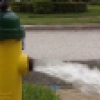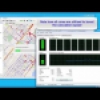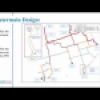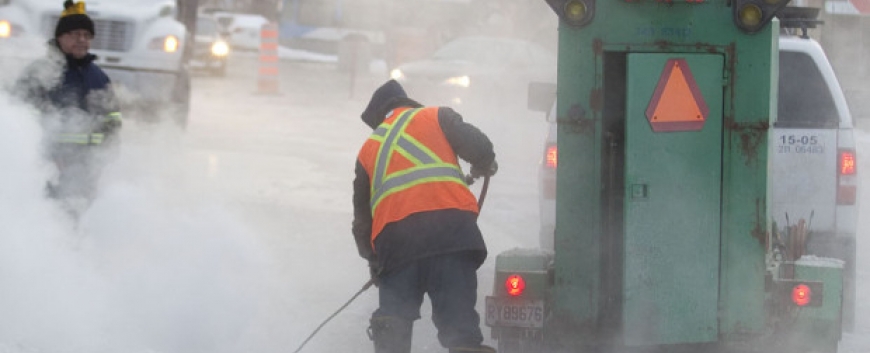What can municipalities do to reduce the pipe breaks caused by coldness?
Or how to save taxpayer money with no extra cost!
Right now, beautiful snowflakes are coming down from the sky for the first time this winter (2015-11-21) at the Greater Toronto Area. For those of you who are working in the water utilities, this means a new round of watermain breaks caused by coldness are in their way. Depending on the watermain size, each break could costs our taxpayers between 10,000 to half a million dollars to repair. Not all of these breaks could be prevented but there are some common sense practices that could reduce the frequency of these breaks. While these simple changes to the system controls could reduce break frequencies, surprisingly most utility companies in North America are not used to these simple practices and they are often choose to act passively by just waiting for the breaks to happen and then repair them. This post is an attempt to discuss some of these simple but effective ways to reduce winter watermain breaks.
- Look at your break data records. They are not just for decoration! Break data records indicate that most cold season watermain breaks happen at nights. Why? Well one of the main reason is that during night, the system demands are lower and most municipalities are filling their reservoirs at this time. This causes the system to experience higher pressure. High pressure functions as a light poison for deteriorated watermains (i.e., it is a chronic issue). It is a common practice to fill reservoirs at night to reduce the energy costs but when it comes to cold season maybe a more planned reservoir filling during the evening peak demand hours could reduce the pressure problem. Remember your pumping capacity is often designed to satisfy the maximum day demand requirement, which by definition happens at summer. Use this extra capacity to fill your reservoir during or just after the evening high peaks when the overall system pressure is low. Yes, you have to pay extra electricity costs but the energy saving is nowhere near the break repair bills.
- If you cannot change the reservoir filling schedule, then reduce the number of pumps that are being utilized and increase the filling duration. Less pump in service means less flow in the system, which means the dynamic pressure is lower, therefore the overall system pressure is lowered.
- Reduce the number of pump ON/OFF cycles. Regardless of whether your pump stations are equipped with surge protection or not, each time that you turn on or off your pumps, it produces pressure spikes that propagates through your network with the speed between 300 to 1200 meter per second. If the high pressure function as light poison for old watermains, these spikes are definitely Cyanide. These are actually the triggering mechanism for most pipe breaks regardless of the season. By reducing these cycles, you reduce the chance of the breaks. So think one more time whenever you turn on or off a pump specially the big ones.
These recommendations were based on my experience on looking at years of recorded data and would be glad to further discuss them if anyone interested.
Remember, ski season is almost here!
Ehsan Roshani Ph.D., P.Eng.







